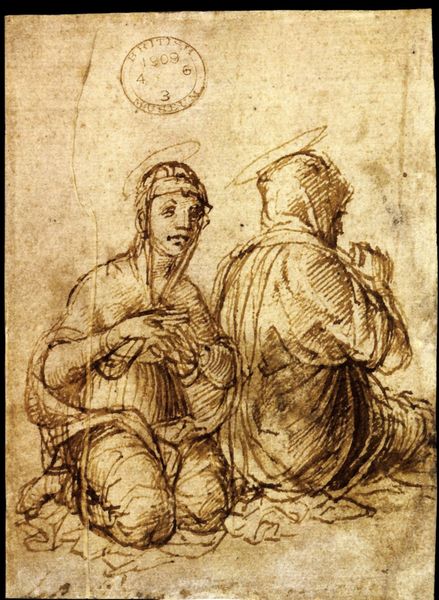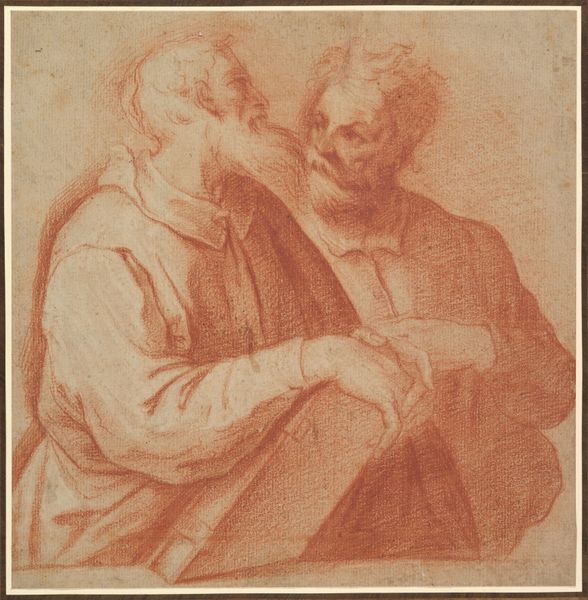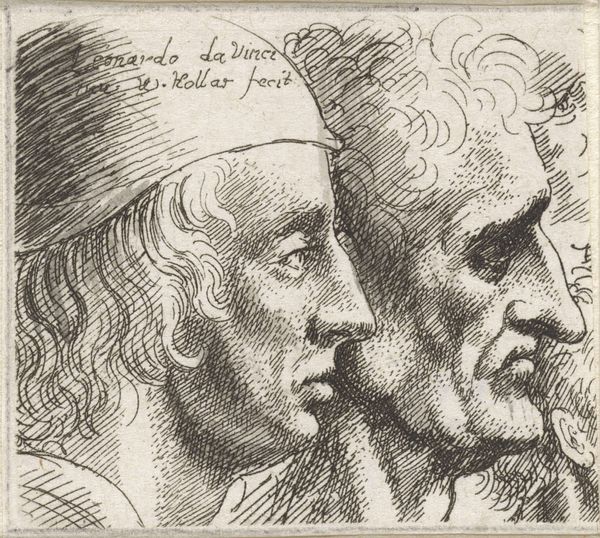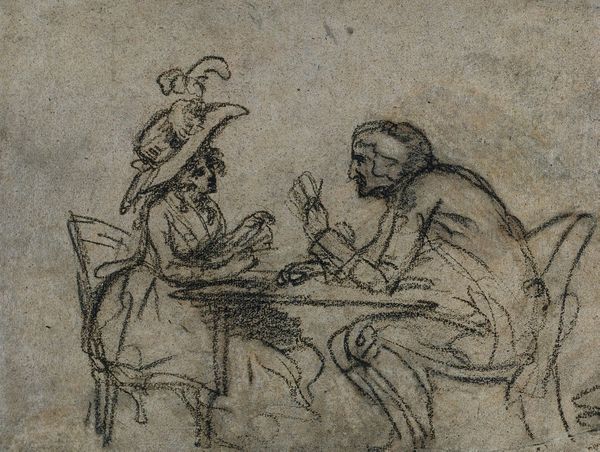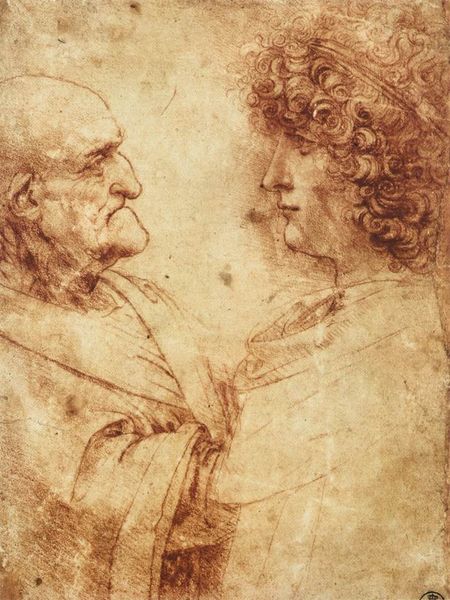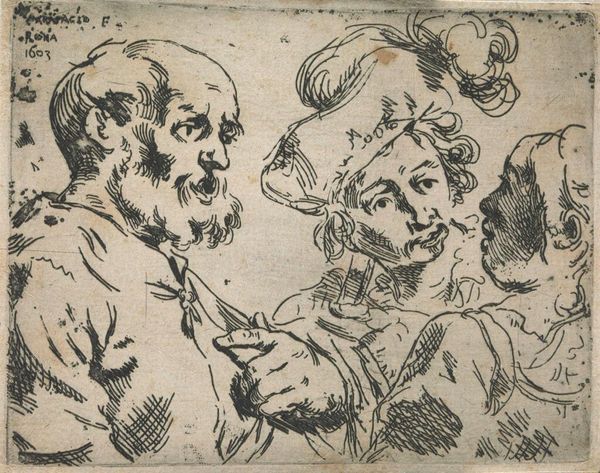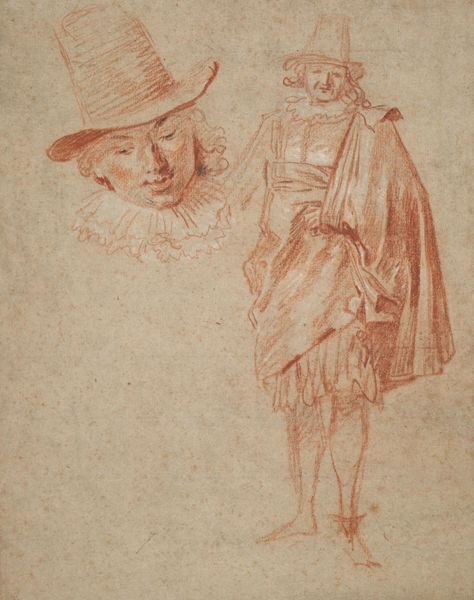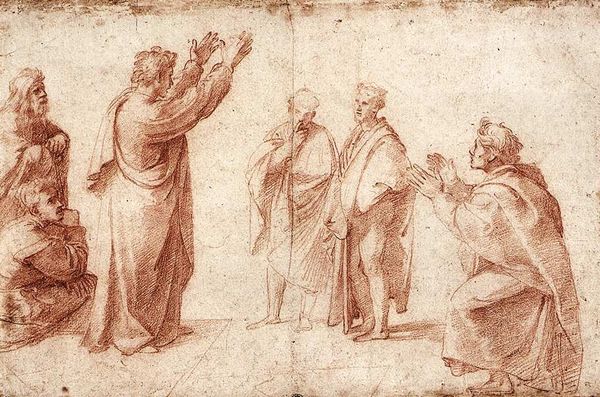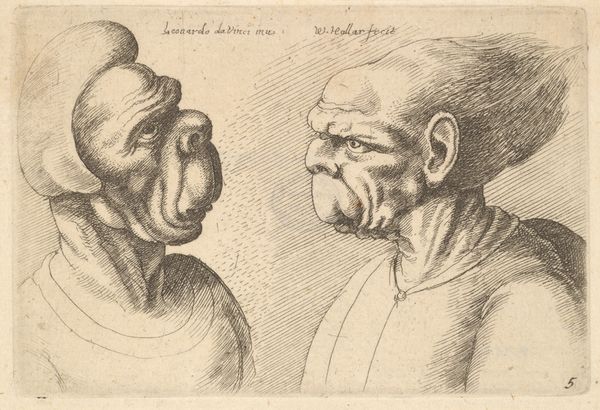
drawing, charcoal
#
portrait
#
drawing
#
caricature
#
charcoal drawing
#
11_renaissance
#
charcoal
#
italian-renaissance
Copyright: Public domain
Curator: This drawing, "Caricature" by Leonardo da Vinci, dates to around 1511 and is held in the Uffizi Gallery in Florence. The piece is rendered in charcoal. Editor: The immediate impression is rather…grotesque, in a fascinating way. It's as though da Vinci is keenly observing, or maybe even exaggerating, perceived flaws. Curator: Exactly. These caricatures provide a window into the Renaissance perception of beauty, or lack thereof. These are not idealized figures, they present marginalized visages, challenging the prevailing aesthetic norms of the period. Da Vinci employed caricature not simply to mock, but to understand the complexities of human identity and representation. We must also question if class and politics impacted how and whom he decided to represent in this way. Editor: Considering the medium—charcoal—there's a rawness here, an almost brutal honesty in how he renders texture, form, and, particularly, those rather… pronounced features. I'm drawn to the skill involved; controlling the material to depict this range of, dare I say, ugliness with such clarity and precision. It really highlights the technical mastery inherent to even seemingly "minor" works. The availability and type of materials impacted not just how he created, but also for whom. Were the caricatures part of a larger study that fed into other more high-commission pieces? Curator: Good question. We also need to acknowledge the gaze inherent in this artwork. Was he satirizing the models, reflecting societal biases or challenging them? I argue it's not straightforward. There is an aspect of reclaiming, an acknowledgement of physiognomy where one could 'read' a person based on their features—which we now see as deeply problematic. However, it opens dialogue to marginalized peoples, but it also opens the gate for bias. It depends how these figures were understood within their communities. Editor: Indeed, thinking about the social context informs our understanding of not just *what* is depicted, but *how* it was created. It’s as though he’s examining the limits of material expression. Curator: It compels me to reflect on how beauty and identity were constructed, visualized, and disseminated through artworks and societal interactions during the Italian Renaissance, revealing nuanced perspectives on gender, class, and marginalized communities. Editor: The contrast between subject matter and artistic mastery really makes this drawing a compelling snapshot into art practices of the period. It prompts a consideration for what materials allow in art.
Comments
Join the conversation
Join millions of artists and users on Artera today and experience the ultimate creative platform.
beckylawrence 10 months ago
⋮
Hi, Your portfolio has left me in awe! I'm eager to acquire your artworks and showcase them at my collection. Your unique style and creative vision align perfectly with our mission. Please let me know which pieces are available for sale. I'm excited to collaborate and bring your art to a wider audience. Warm regards, Rebecca.
crystal about 1 year ago
⋮
🎨 Did you know the genius behind The Last Supper and Mona Lisa also dabbled in… caricatures? 🤔 Leonardo da Vinci wasn’t just a scientist and painter—he loved sketching exaggerated faces to study human emotions and imperfections! 🖌️ Leonardo’s work proves that even a perfectionist like him loved to have a little fun with art. 😄


